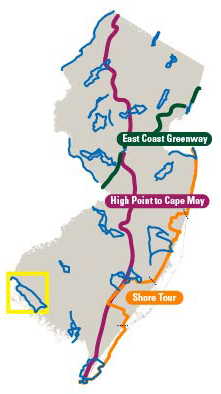- KML (12k)
Use to view
tour guide routes in a mapping
application on a desktop computer,
mobile device or GPS device.
- Geospatial
PDF
(4.2m)
Use to view your current location along the tour guide routes using a GPS enabled mobile device.
- PDF (2.5m)
Use to view or print the tour guide routes
in a brochure format.
Instructions for
using these files formats is
available. |


